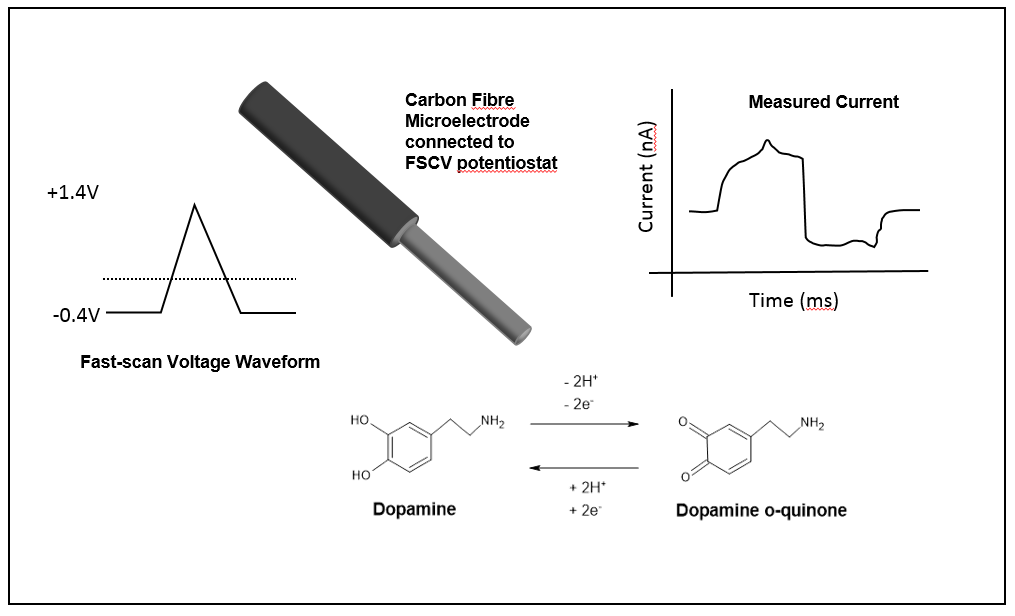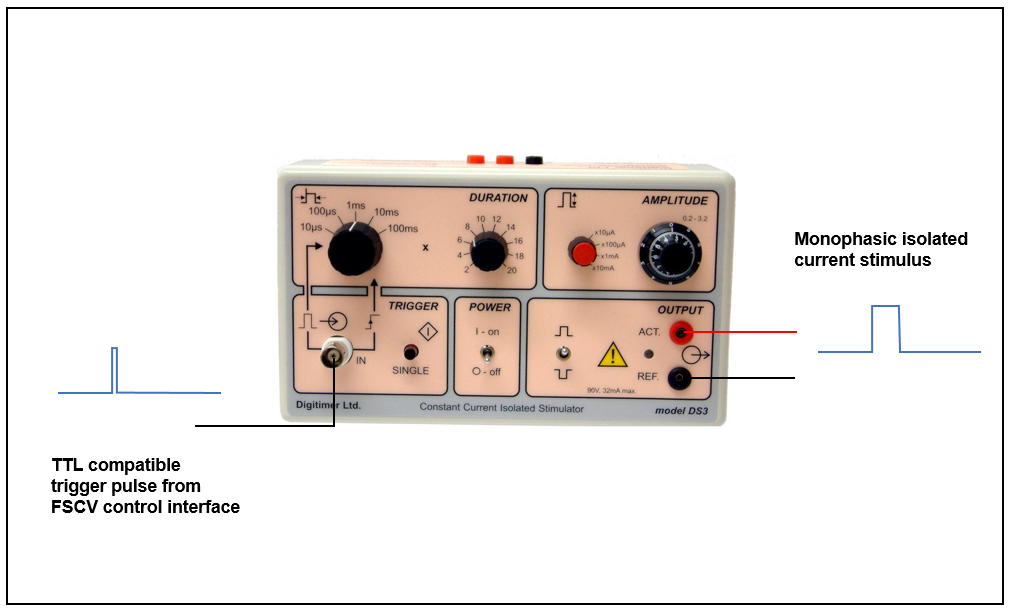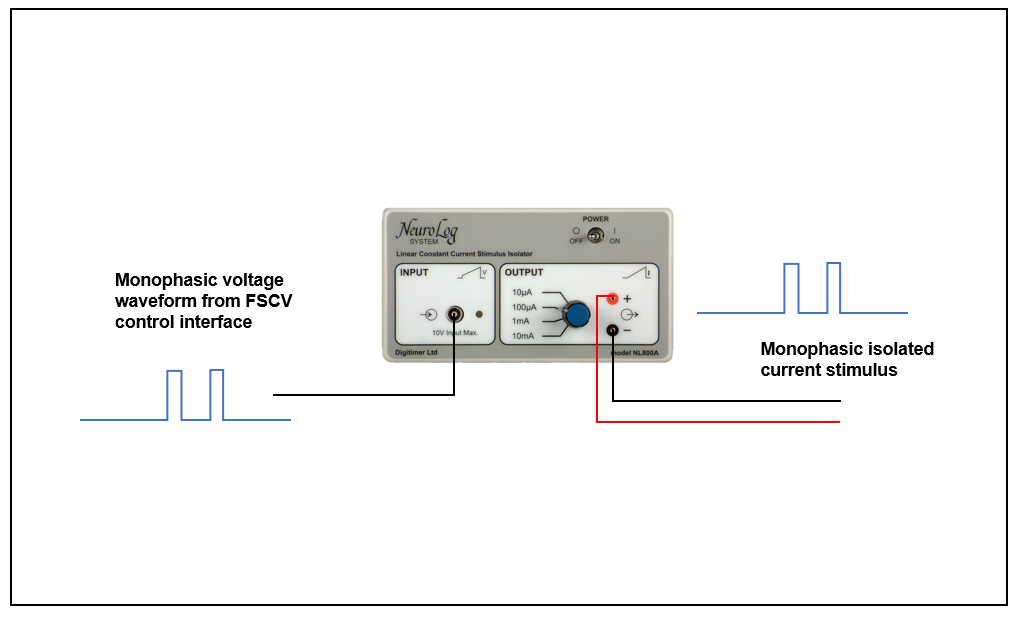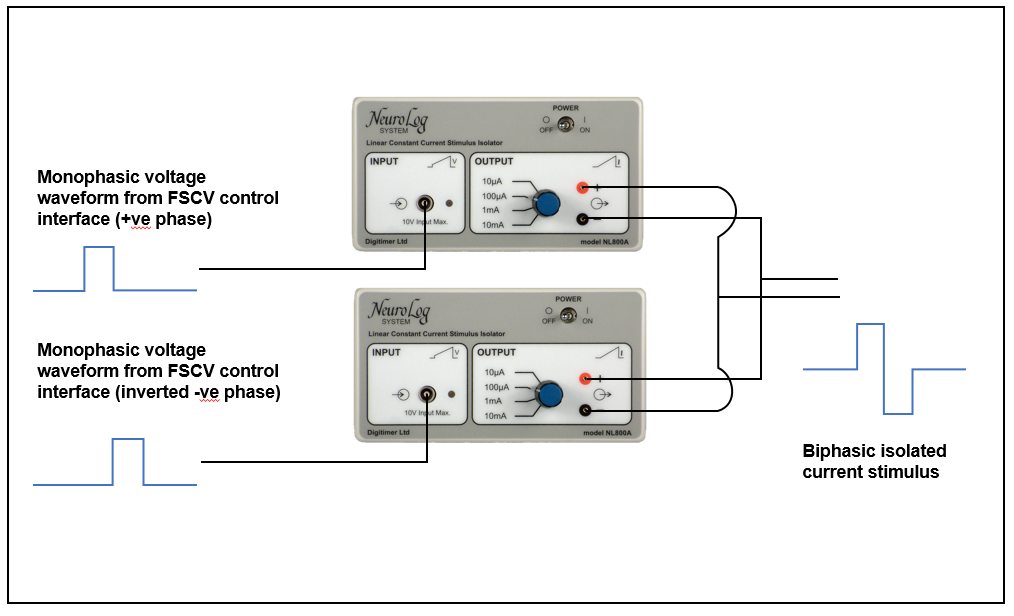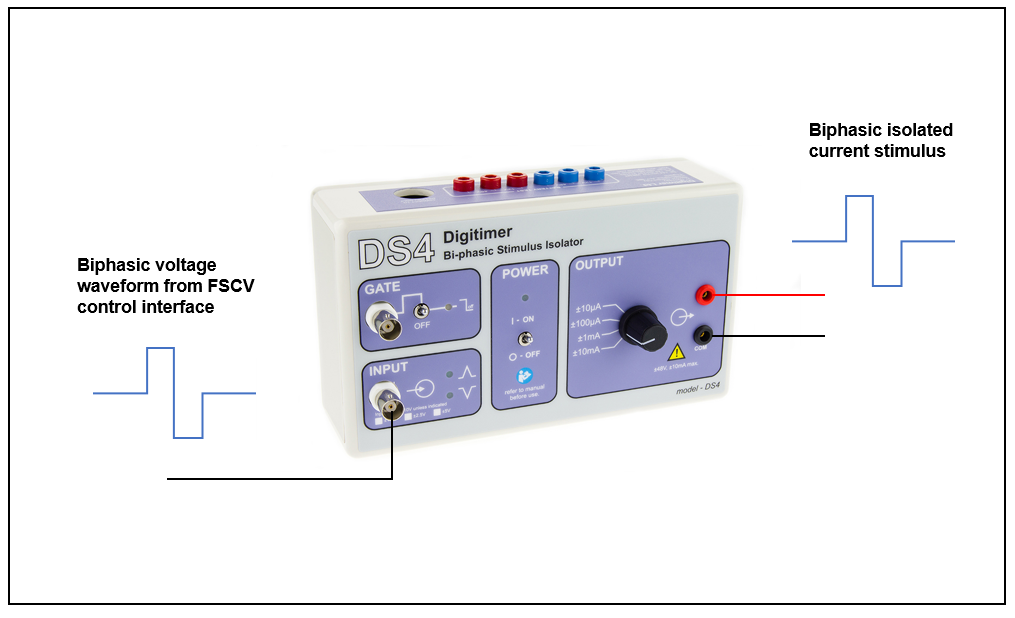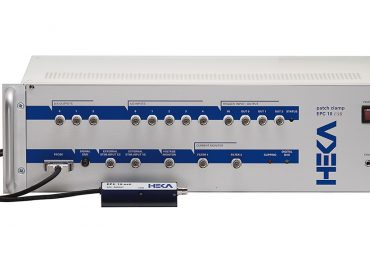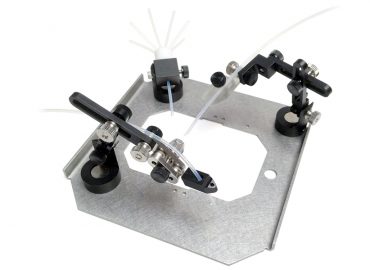Electrical Stimulators for Fast Scan Cyclic Voltammetry (FSCV)
Options for electrically-evoking neurotransmitter release
Introduction
Fast scan cyclic voltammetry (FSCV) is an electrochemical analysis technique which relies on the unique oxidation/reduction properties of molecules and allows realtime monitoring of their concentrations. The technique has been extensively applied to measurement of release and re-uptake of monoamine neurotransmitters, including Dopamine, Serotonin (5-HT) and Noradrenaline, within whole animal and brain slices.
Briefly, a miniature carbon fibre electrode is inserted into biological tissue, for example the living brain or in vitro brain slice and a cyclic voltage is applied, resulting in the repeated oxidation and reduction of the molecule of interest. Because each chemical possesses a unique reduction potential, it is possible to tune the excitation voltage waveform to detect levels of specific molecules. Electrochemical changes in the molecule of interest generate a nanoamp (nA) sized AC current, which when subtracted from background activity, can be used to make accurate real-time measurements of neurotransmitter concentrations within the vicinity of the carbon fibre electrode.
While it is possible to use FSCV to measure baseline levels or pharmacologically modulated levels of transmitters, many researchers choose to employ electrical stimulation in order to induce synaptic release of the transmitter of interest. Electrical stimulators suitable for use with FSCV need to be electrically quiet (low noise) and be able to deliver precise and reproducible low amplitude currents in the micro-amp range. It is also necessary that stimulation delivery can be accurately timed to occur between FSCV scans.
There are a number of hardware and software solutions for FSCV, some of which are commericially available and others which have been developed within academic laboratories. These FSCV systems typically consist of a the following components:-
- Potentiostat
- Data acquisition/control interface
- Electrical Stimulator
- PC & Software for data collection, analysis and control of the potentiostat and stimulator
The capabilities of the stimulation control interface and software determine the most appropriate stimulator for any system. Fortunately, Digitimer is able to provide a range of devices for a number of configurations.
Triggered Monophasic Stimulation
In some FSCV systems the control interface/software is only able to generate one analogue voltage output and this is typically employed to drive the potentiostat. A separate digital (TTL compatible) output is used to trigger the stimulator, generating a rectangular monophasic current pulse. For this sort of system we would recommend our DS3 Constant Current Isolator which accepts a TTL trigger input, but has on-board controls for current and pulse duration.
Reference
Sgobio C, Kupferschmidt DA, Cui G, Sun L, Li Z, et al. (2014) Optogenetic Measurement of Presynaptic Calcium Transients Using Conditional GeneticallyEncoded Calcium Indicator Expression in Dopaminergic Neurons. PLoS ONE 9(10): e111749. doi:10.1371/journal.pone.0111749
Analogue Voltage-controlled Monophasic Stimulation
More advanced systems might have the capability to generate an additional analogue voltage which may be used to drive the stimulus isolator and define the stimulus waveform characteristics. Here, our NeuroLog System NL800A provides the perfect solution. This compact, battery-powered linear isolator is popular amongst researchers examining electrically evoked release of neurotransmitters, as it accepts a monophasic voltage waveform and outputs a constant current stimulus which is proportional in shape and amplitude to the command signal applied to it by the FSCV system. This level of control allows the operator to make adjustments to the stimulation parameters and scanning waveform from the same software interface, vastly improving usability. Using the NL800A and analogue voltage control also means that stimulation pulses are not limited to rectangular shapes.
The video below from Francis Maina and colleagues (see citation below), published in the Journal of Visual Experiments, illustrates how presynaptic dopamine release can be measured in striatal brain slices
References
Guajardo, F.G.; Velásquez, V.B.; Raby, D.; Núñez-Vivanco, G.; Iturriaga-Vásquez, P.; España, R.A.; Reyes-Parada, M.; Sotomayor-Zárate, R. Pharmacological Characterization of 4-Methylthioamphetamine Derivatives. Molecules 2020, 25, 5310. https://doi.org/10.3390/molecules25225310
Maina, F. K., Khalid, M., Apawu, A. K., Mathews, T. A. Presynaptic Dopamine Dynamics in Striatal Brain Slices with Fast-scan Cyclic Voltammetry. J. Vis. Exp. (59), e3464, doi:10.3791/3464 (2012).
Analogue Voltage-controlled Biphasic Stimulation (Option 1)
However, the DS3 and NL800A are only able to deliver monophasic stimuli, so in situations where charge-balanced biphasic stimuli are preferred, there are two further options. The first is to connect two NL800A’s in parallel and drive each with separate voltage waveforms that define the positive and negatives phases of the stimulus. This approach requires the output polarity of one NL800A to be reversed so that two separate positive polarity voltage waveforms combine to give a biphasic stimulus to the preparation. As with the single NL800A solution, the operator can define stimulus shapes that are totally arbitrary and do not need to be rectangular.
Reference
Christie A. Lee, Lingjiao Qi, Alison Amos, Kristen Blanton, Gregory S. McCarty, Leslie A. Sombers Reducing Data Density in Fast-Scan Cyclic Voltammetry Measurements of Dopamine Dynamics. Journal of The Electrochemical Society 2018, vol. 165, issue 12 pp: G3042-G3050 https://doi.org/10.1149/2.0081812jes
Analogue Voltage-controlled Biphasic Stimulation (Option 2)
A less complex solution, which may be an option in more advanced FSCV systems that are able output a biphasic voltage to the stimulator, is to use our DS4 Biphasic Current Stimulator. This isolator behaves like two NL800A’s connected as described above, but the DS4 can be controlled using a single biphasic voltage waveform, that can define rectangular or arbitrary stimulus shapes.
Reference
Brandon M. Fritz, Braulio Muñoz, Fuqin Yin, Casey Bauchle, Brady K. Atwood, A High-fat, High-sugar ‘Western’ Diet Alters Dorsal Striatal Glutamate, Opioid, and Dopamine Transmission in Mice, Neuroscience,
Volume 372, 2018, Pages 1-15, https://doi.org/10.1016/j.neuroscience.2017.12.036.
Whatever option is best for your FSCV measurements, Digitimer staff are available to assist with your electrical stimulation requirements and recommend the most appropriate stimulus isolator. Just contact us for assistance.
